A great battle wages between the culinary world and the pastry world.
Chef’s knife vs. piping bag!
Food processor vs. stand mixer!
Indulgent Wagyu beef vs. decadent puff pastry!
Culinary arts vs. pastry arts!
(In truth, this “battle” is more like striving side-by-side, reaching for excellence in both disciplines. But that concept is a little less fun.)
Let’s see if we can settle this age-old debate by exploring four reasons why culinary arts is cooler than a walk-in freezer—and four reasons why pastry arts actually gets more cool points.
Four Reasons Culinary Arts Is Cooler than Pastry Arts
1. Culinary Arts Legends Get All the Love
Quick! Name five famous chefs.
Got ’em?
Chances are the first names that came to your mind are known for their culinary arts expertise, not their pastry chops. That’s because—fair or not—executive chefs tend to get the glory.
It’s not that pastry chefs don’t get any recognition! They do, from Michelin mentions to James Beard Awards. And in fact, many of the top Michelin chefs are also fabulous pastry chefs.
But for general name recognition? Culinary has that on lock.
Now, we all know that we enter cooking for the love of the craft, not for the accolades. But the accolades certainly don’t hurt!
2. Culinary Artists Live on the Edge
In the culinary arts, the chef has the discretion to add a little more seasoning here, a little extra heat there. A bit less oil. A bit more sauce. Recipes are a guide, not a mandate. They have freedom to play and experiment…and that’s where the fun is! The culinary arts are less about specific measurements, and more about intuition (when backed up by a proper education in the cooking fundamentals, of course).
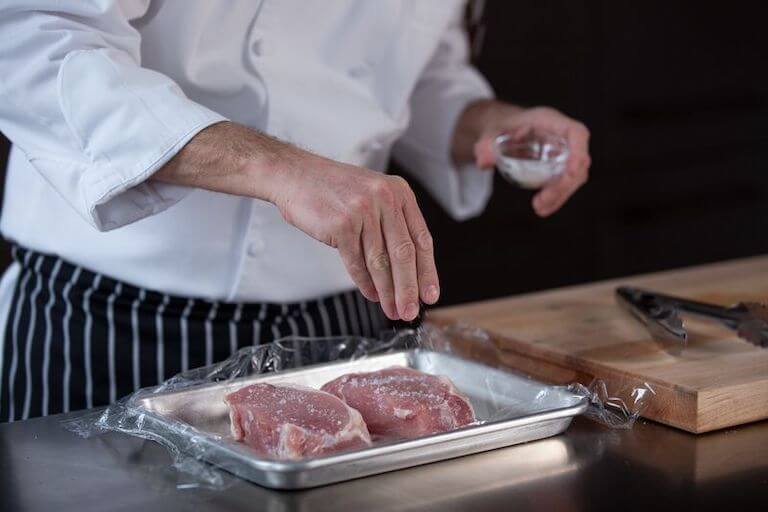
A chef sprinkling salt on pork chops. How much? Up to him.
In baking? That kind of deviation could ruin the whole batch. Pastry chefs are glued to their recipes like caramel to the roof of your mouth.
3. The Culinary Options Never End!
There are more than 200 varieties of potatoes available in the United States.
Eight primal cuts of beef (plus subprimals and portion cuts).
2,500 varieties of apples—just in the United States!
Culinary arts has a virtually unlimited number of options and combinations that chefs can turn into edible art. That infinite variety is what builds the versatility of the culinary world. You can have a similar dish by five different chefs, and each one could be completely different based on the specific types of ingredients and techniques used.
4. A Big Focus on Nutrition
Who are the coolest people you can think of? Sports pros? Famous musicians? Maybe an influencer or two? Most of those people prioritize their health. And that means they put a premium on healthy protein, a variety of veggies, and healthy whole grains—aka, the culinary arts.
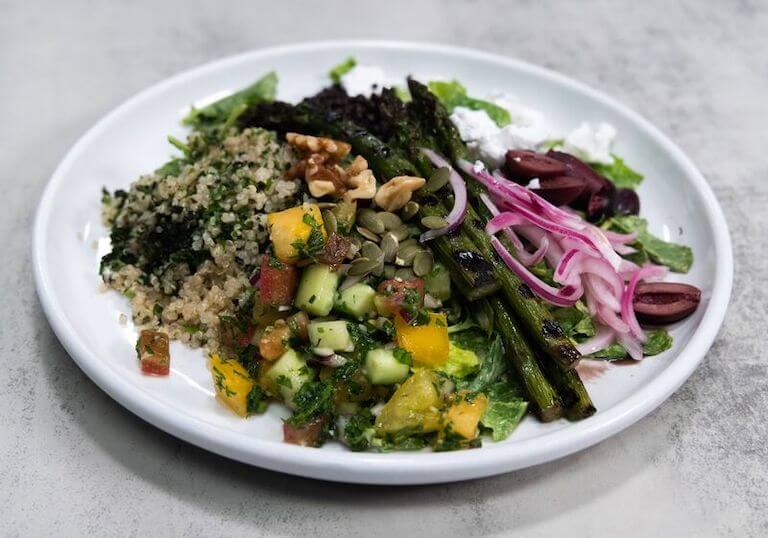
A heart-healthy seasonal dish
Pastry may be tasty, but main courses are where the fuel lives. (And they’re tasty, too.)
Four Reasons Pastry Arts Takes the Cake
1. Pastry Chefs are the “Neurologists of the Kitchen”
In his book Kitchen Confidential: Adventures in the Culinary Underbelly, the legendary Anthony Bourdain called pastry chefs the “neurologists of the kitchen.” As usual, he was correct.
Pastry chefs bring remarkable levels of organization to the kitchen. They like things just-so. Each tool is in its place, just like a surgeon prepping for a tricky procedure. If you think attention to detail is cool, then you’ll be in awe of a pastry chef.
(And if you want to see what happens when you cross one of these perfectionists, just use a pastry chef’s microplane on garlic. But don’t say we didn’t warn you.)
“Pastry students and pastry chefs tend to be finicky about precision and accuracy and having everything weighed and measured. It’s a very delicate balance, but we thrive in that kind of environment.”*
Anne Lanute, Executive Chef, Escoffier Online Baking & Pastry Arts
2. Pastry Chefs Put the ART in Pastry Arts
Fondant flowers. Intricate piping work. Delicate basket weaves and watercolor frosting. Pastry is an art. Some desserts are so gorgeous that it’s a shame to eat them! But they certainly make an impression. Wedding guests may forget the chicken or fish, but they won’t ever forget the cake!
Certified Master Pastry Chef® Frank Vollkommer has made stunning creations that defy gravity in sugar and chocolate. Wedding cake designer and Escoffier Chef Instructor Steve Konopelski has created multi-tiered wedding showpieces that (almost) stole the spotlight from the bride.
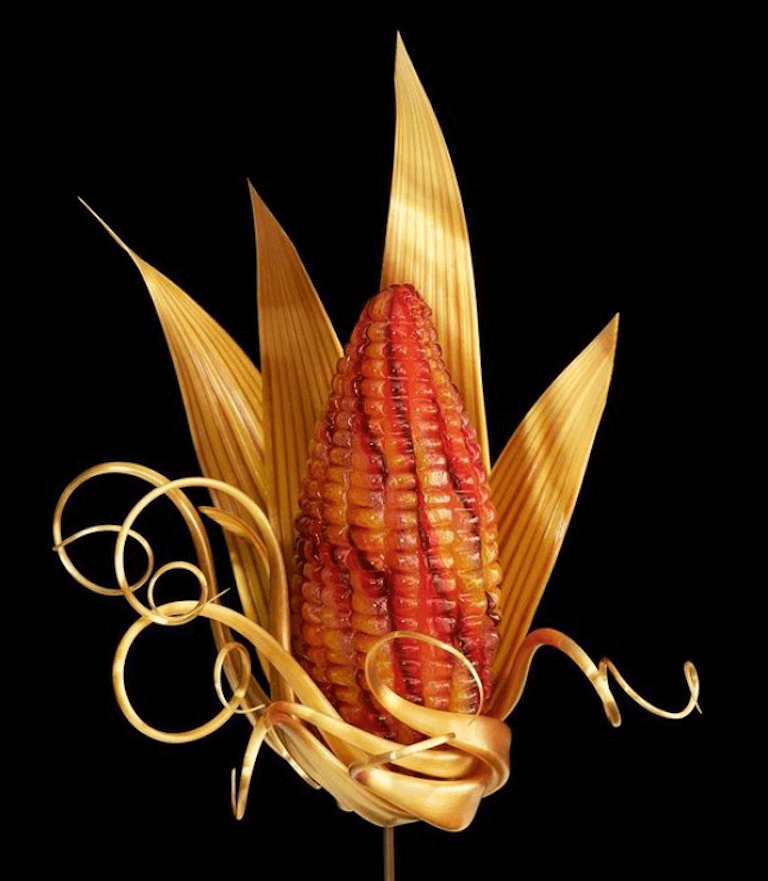
An ear of corn made entirely of sugar, by CMPC® Frank Vollkommer
The pastry arts require a steady hand and an artistic eye to create truly jaw-dropping sculptures and desserts. And these finished products have to taste great, too. It’s a fact: pastry chefs are seriously magical.
3. Perfection Is In Precision (And We Like It That Way)
In baking and pastry, the recipe is sacred. Proportions are carefully tested to ensure a perfect bake and a pleasing texture. Cook time could be adjusted up or down depending on how high above sea level the oven is. Ingredients are weighed, not measured, for total perfection. Teaspoon? Ha! We work in grams around here.
They bring this focus on the minutiae to the realm of pastry, turning dry concepts of science and math into edible (and delicious) creations.
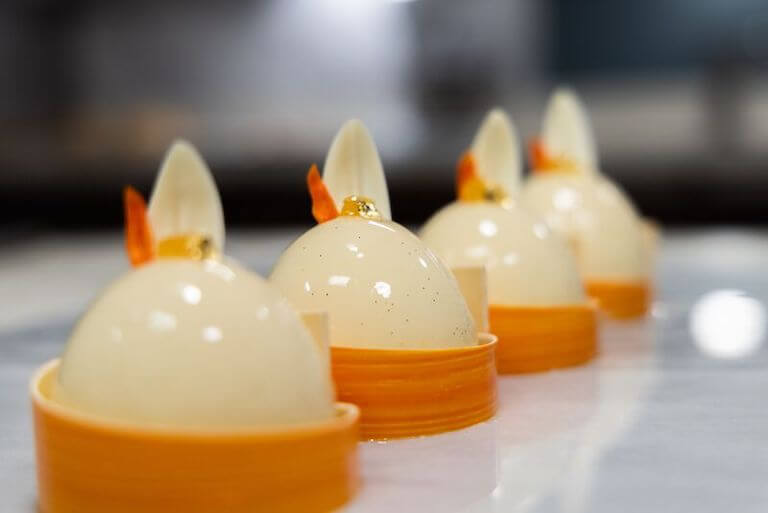
Four perfect petit gateau
Of course, once you know the chemical rules of a successful dish, you also know how to break them. It’s not only culinary chefs who get to experiment!
4. Pastry Gets the Last Word (and the First)
In a conventional meal, we start with savory and end with sweet. So that last lingering bite? That mouthful that puts the exclamation mark on a magnificent dining experience? That’s the pastry chef’s wheelhouse. A perfect dessert can cap off a wonderful meal…or save one that may have been lackluster. How often does a special dessert turn a guest’s so-so experience into a success? All. the. time.
But pastry isn’t just relegated to dessert. Many of the most beloved breakfast items also fall under this category. Waffles, pancakes, croissants, crêpes, danish…many of us wake up with pastry.
Everything that happens in the middle, like lunch and dinner? That’s just filler.
Checkmate, culinary.
Do It All: Culinary Arts AND Pastry Arts
Light-hearted competition aside, many great culinarians are adept at both culinary AND pastry arts. There can be quite a bit of overlap between the two, and a well-rounded cook or chef should know both.
In Escoffier’s Culinary Arts programs, students are introduced to baking and pastry skills like cookies, custards, and breads, as well as culinary techniques. Many experts choose to go even further, getting degrees or diplomas in culinary arts and pastry arts, so they can excel at both.
How will you start your career: culinary arts, or baking and pastry arts? Contact our Admissions Department to find out how an education can get you started on the right foot.
To learn more about the culinary and pastry arts, try these articles next:
*Information may not reflect every student’s experience. Results and outcomes may be based on several factors, such as geographical region or previous experience.

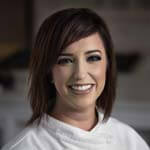 “Pastry students and pastry chefs tend to be finicky about precision and accuracy and having everything weighed and measured. It’s a very delicate balance, but we thrive in that kind of environment.”*
“Pastry students and pastry chefs tend to be finicky about precision and accuracy and having everything weighed and measured. It’s a very delicate balance, but we thrive in that kind of environment.”*